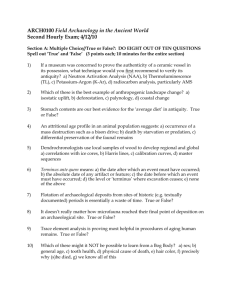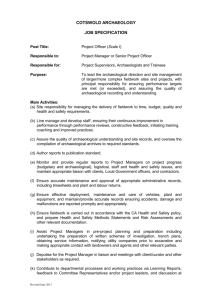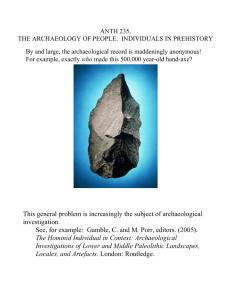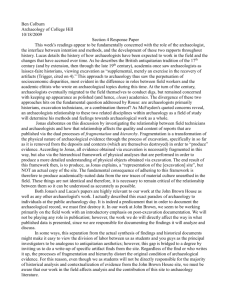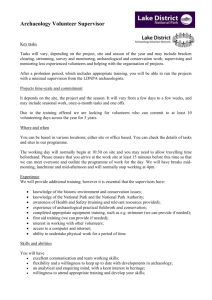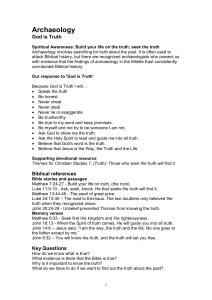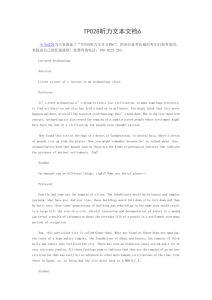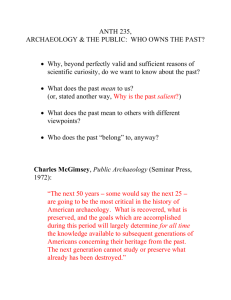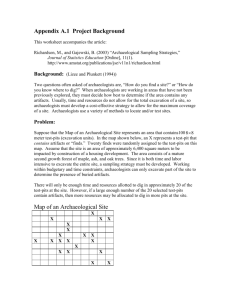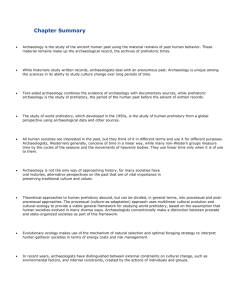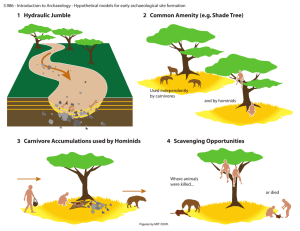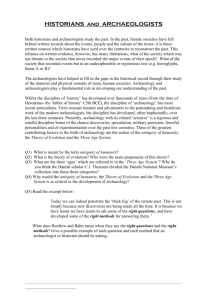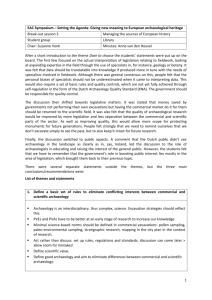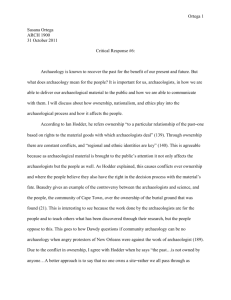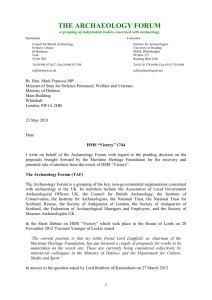ARCH0100_FirstHourly_2010
advertisement
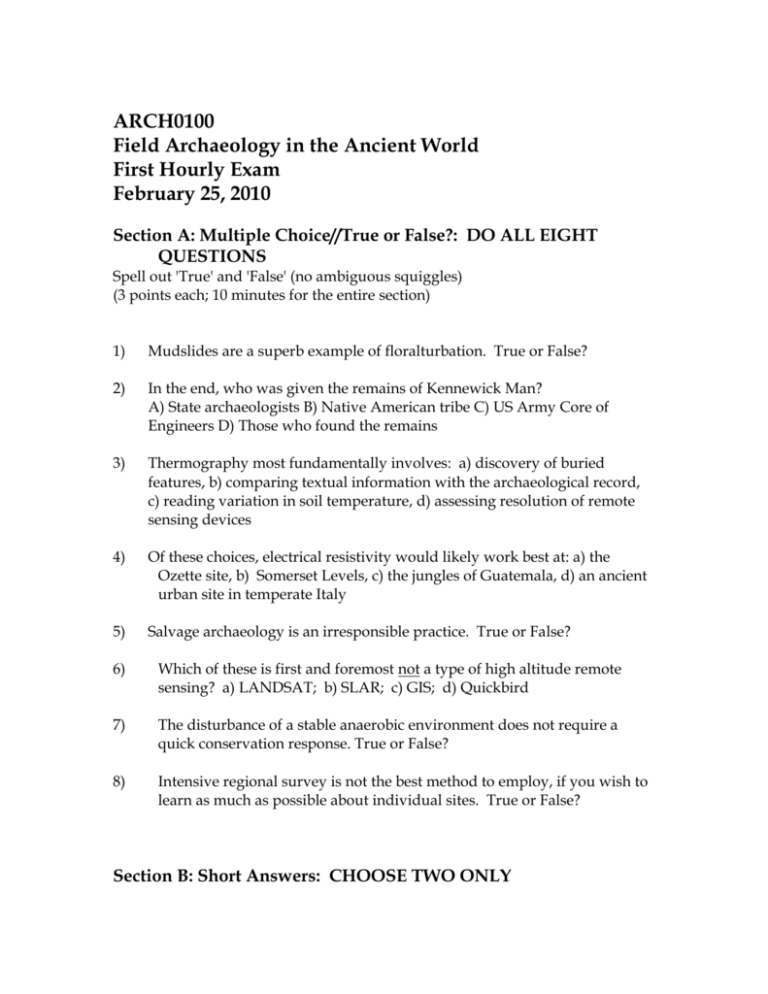
ARCH0100 Field Archaeology in the Ancient World First Hourly Exam February 25, 2010 Section A: Multiple Choice//True or False?: DO ALL EIGHT QUESTIONS Spell out 'True' and 'False' (no ambiguous squiggles) (3 points each; 10 minutes for the entire section) 1) Mudslides are a superb example of floralturbation. True or False? 2) In the end, who was given the remains of Kennewick Man? A) State archaeologists B) Native American tribe C) US Army Core of Engineers D) Those who found the remains 3) Thermography most fundamentally involves: a) discovery of buried features, b) comparing textual information with the archaeological record, c) reading variation in soil temperature, d) assessing resolution of remote sensing devices 4) Of these choices, electrical resistivity would likely work best at: a) the Ozette site, b) Somerset Levels, c) the jungles of Guatemala, d) an ancient urban site in temperate Italy 5) Salvage archaeology is an irresponsible practice. True or False? 6) Which of these is first and foremost not a type of high altitude remote sensing? a) LANDSAT; b) SLAR; c) GIS; d) Quickbird 7) The disturbance of a stable anaerobic environment does not require a quick conservation response. True or False? 8) Intensive regional survey is not the best method to employ, if you wish to learn as much as possible about individual sites. True or False? Section B: Short Answers: CHOOSE TWO ONLY (12 points each; 8 minutes each) 1) Name your two favorite archaeologists from Renfrew and Bahn, Chapter 1 (‘The Searchers’). What appeals to you about them? Were they ‘good’ archaeologists? Were they ‘game changers’? NO RIGHT ANSWERS, BUT NAME SHOULD BE SPELLED CORRECTLY, AND SOME KIND OF INFORMED COMMENT ON BOTH ‘GOOD’ AND ‘GAME CHANGER’ SHOULD BE MADE. 2) Name FOUR types of C-transforms. Name as many specific places, features or artifacts as you can in your answer. 3) Do you agree with Kent Flannery's (amusing) assessment that regional survey finds are simply the 'junk you find on the surface, and I say screw it'? Very quickly, give three reasons why you think he is right, OR three reasons why you think he is wrong. 4) How would you explain a crop mark (and other associated ‘marks’, name as many as you can) to an above average five year old? 5) What is so useful, and special, about wetland archaeology? Give examples. Section C: Archaeological Situations: CHOOSE TWO ONLY (26 points each; 12 minutes each) 1) An Eccentric Millionaire calls you in to investigate the possibility that there are fabulously wealthy subterranean tombs and other buried structures on his property. Problem is: he doesn't want you to 'disturb the surface of the earth' (he is HEAVY into the conservation ethic). You would cheerfully write him off as a nutcase except a) there are rich tombs known from this area, b) he is very rich and very old, c) he may have a point. What options do you have? What questions would you like to ask the Eccentric Millionaire about where he lives and what he knows before deciding how to proceed? (NB: be as specific as possible) 2) Your twelve year old sister was thinking about becoming an archaeologist, but is somewhat put off by its 'treasure hunting' mystique. What can you say to help her out her? Would some historical perspective - on how archaeology has developed over time - be useful? 3) You have two friends, both archaeologists. One (Digger) does excavation; the other (Plodder) does regional survey. They fight all the time about which technique is ‘better’ and it is getting nasty. You personally study pottery from both surveys and excavations, and are fed up with the disagreement. How would you frame an argument that would shut them up? What would you say to both sides? 4) Help! A series of beachfront condominiums are going to be built in an area where local informants had consistently reported the presence of archaeological remains. For whatever reason (bribery, graft) there is no legal way to stop them. You have six months before the bulldozers roll in. What would — or what could — you do? What are your archaeological options?

